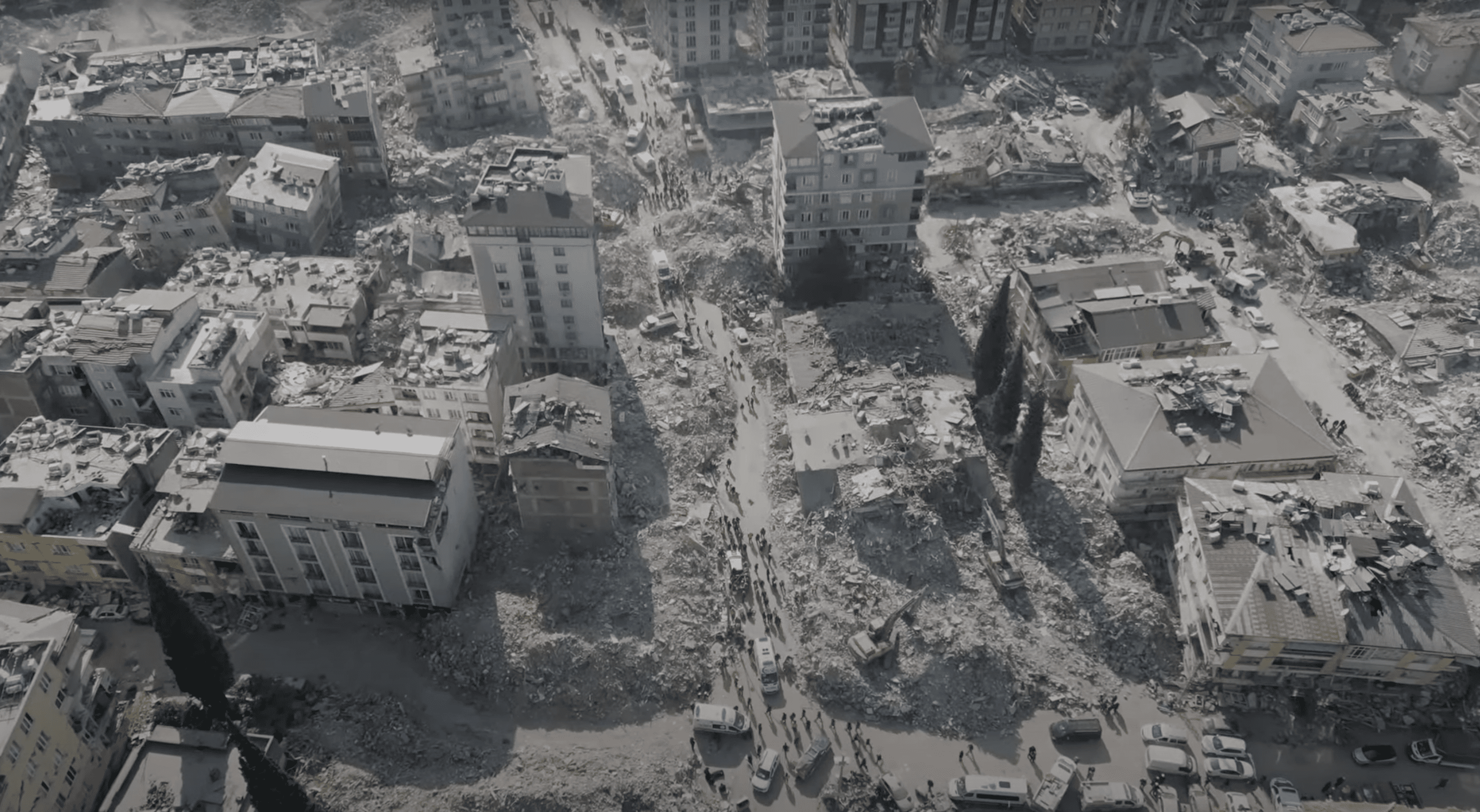
Sania,* an obstetrician practicing in a hospital in southeastern Türkiye, was checking on a patient when the February 6, 2023, earthquake struck.
“Now, when we are receiving bad news and death is everywhere, of course I ask, ‘Why, God? Why?’, ” Sania says four days after the quake. She turns away and wipes the back of her hand across her cheek.
While on duty before the earthquake struck, Sania had gotten up during the night to check on a patient scheduled for surgery later in the day. “The room began moving back and forth like when you’re rocking a baby in a bed,” she recalls. “I thought I would wait and just let it pass. My nurse clung on to me and began to cry.”
The rocking didn’t pass. It was the beginning of the Türkiye-Syrian earthquake, and Sania was standing at the epicenter.
“Everything kept moving. Things started falling and breaking. The air filled with dust. People began running outside, into the rain,” she remembers. “We tried to help everyone get out, but we were struggling ourselves. I could only think of my sister back at our apartment, the bookcase by her bed, the big mirror. I didn’t know what I should be doing or where I should be helping. It was chaos. My phone died.”
When the earthquake finally stopped, Sania remembers, people returned in frightened huddles to the debris-filled hallways of the hospital. Some were trying to reach family on their phones, others were looking for a safe place. Someone called for help for a woman in labor. Sania delivered the baby, then watched as the mother scooped the bloody bundle up and ran out of the building. A woman pregnant with twins came in; she had fallen down a stairway trying to leave their building and had broken her leg. A father stood in another corner crying; his full-term baby had been born dead.
Nobody was sure the hospital was safe. The walls were broken, the beds were out of place. Everyone was afraid. Sania tried to decide what to do.
“We finally moved to a lower floor where it seemed safer. I tried to clean up, straighten things. The injured began arriving.”
Then the shaking returned. Terror pushed everyone outdoors, back into the rain. The upper floors of the hospital were deemed unsafe; the hospital’s emergency entrance became a haven.
The scene Sania saw in the hospital after the second quake was even more chaotic. “The floors were covered with blood. People were everywhere, restless and afraid. Some came in carrying their dead children. Many were searching for somewhere safe. Parents held up Instagram photos of happy, carefree university students. ‘Have you seen them?’, they would ask.”
Sania couldn’t remember who she’d seen. The hospital hadn’t had a chance to release the names of the deceased. She was selected for the hardest job. “I went to the morgue. I checked every bag without a name. I saw so many. Children. Old ladies. Some looked like they were sleeping. Others seemed to be trying to protect themselves. I found only one person who matched a photo. I couldn’t find my friend’s baby.”
The earthquake was over, but the tragedy had just begun. Sania’s apartment appeared intact, but nothing felt secure to her. She and her sister spent nights in different cars. In safer places. No taxis were running, no buses. No supermarkets were open, no food available. No gas, no water.
Someone gave her a blanket. “I never was so happy receiving a blanket,” she says. “I wondered if someone thought it was too small for them or a color they didn’t like. I was so thankful.”
As the stories came in, the trauma struck closer. Sania heard that the manager for their department — and her children — were gone. Her sister’s closest friends hadn’t made it. The nurse she’d worked with the day before the quake, her best friend, had returned home for a few hours to get some rest before the next shift. Her husband had been pulled from the rubble, both legs crushed. They had found her too, but not alive.
Sania’s chin quivers. “She almost stayed with me at the hospital that night. But they were just married. She wanted to be with him.”
It is more than her mind can comprehend. So many lost, and so many still waiting for the diminishing chances of a miracle. Why are some saved, and some not? Sania was asking that very question when she met another thought, one she knew wasn’t her own. “God assured me that He was with each one who died. So, ... they did not die alone,” she said.
Standing in the middle of such overwhelming loss, she chooses to meet her growing sadness with the comfort that every life spared is a sign that God is present and still working. “Knowing that helps me,” she explains.
It doesn't ease the pain, but it keeps her moving. “What you believe about God makes all the difference. I don’t know why good happens to some, bad to others. I just know God told me He loves those who died as much as those He saved. He is here. I am here. And I pray continually for Him to give me the peace to do what I need to do at this time.”
Only days beyond an incalculable tragedy, that is the only answer Sania can give right now. It’s an answer of faith. “We are too helpless to save ourselves from any of this suffering. But Jesus Himself chose to walk through death — death even worse that what people are experiencing. He knows personally what we’re going through. And He did it so that someday, both those who have died and those who live will never have to suffer like this anymore.”
* Not her real name.